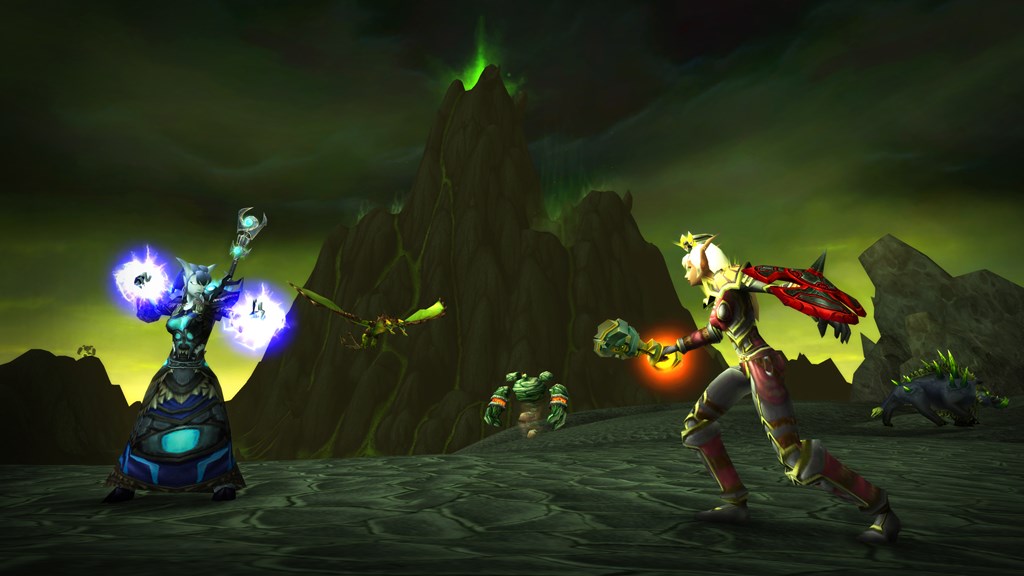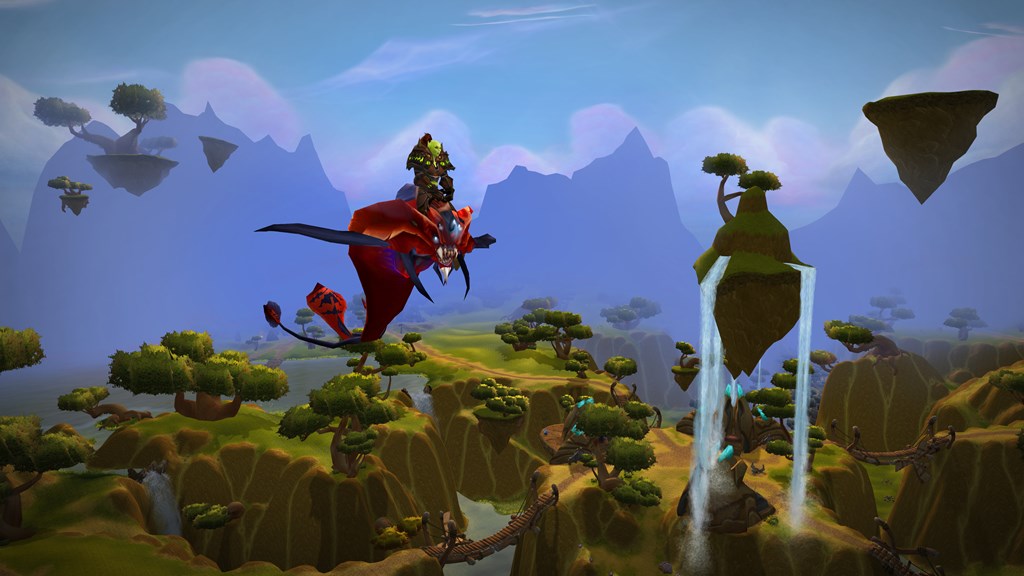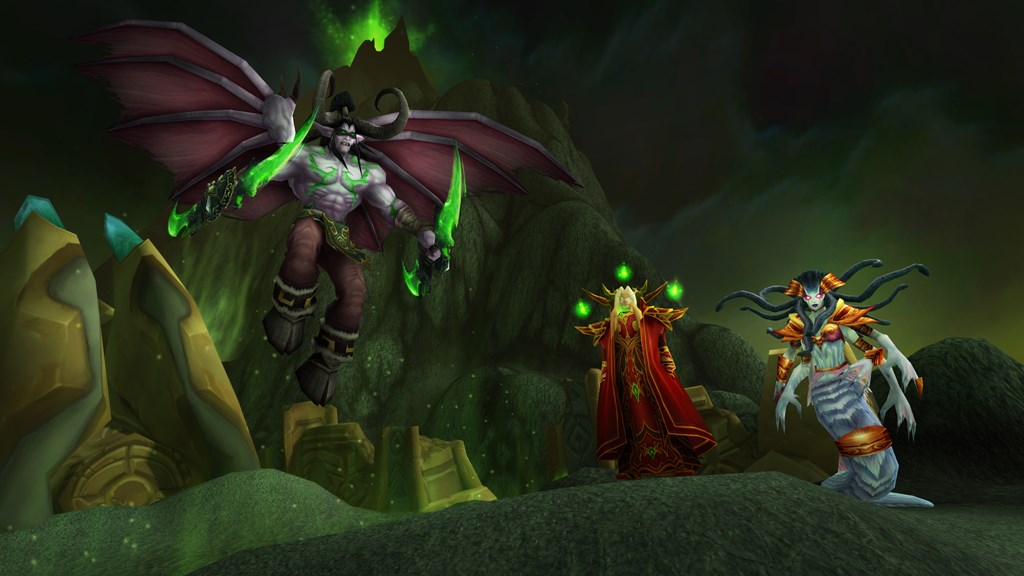The future of World of Warcraft Classic with John Hight and Brian Birmingham
What's next for the highly popular MMO reboot?

BlizzCon 2021 has come and gone, and we've gotten an official announcement for World of Warcraft: Burning Crusade Classic, the first expansion for the reboot of the world's most popular MMO.
Now that WoW Classic has come to the end of its Vanilla content lifecycle with the December launch of Phase 6 content - including the release of the final Vanilla era raid, Naxrammas - the announcement of Burning Crusade Classic is hardly a surprise. But the huge success of World of Warcraft Classic was hardly a forgone conclusion, according to John Hight, the executive producer of World of Warcraft.
"We had talked ourselves out of it, honestly," he told us in an interview over the weekend. There had been a great deal of hesitancy on the part of Blizzard to recreate the original World of Warcraft experience, largely out of fear that the community might be locked into a nostalgia for something that simply hadn't existed previously.
"The community had been pushing for it for a while, you know. Sadly, there’s some memes out there of [J. Allen Brack] saying 'you think you want it, but you really don’t.' But, boy, we were all completely blown away by the reception."
That reception led to a doubling of subscriptions over the subsequent months after its launch in November of 2019, more than anyone at Blizzard could have anticipated.
"Ultimately we did it as a love letter for our players," Hight said. "We felt like 'Well, we may not have a big enough community to really dive into this, but we want to support it. We may not make any money off of this, but we want to do it anyway.'"
"And then they came in in droves and now we have a very large and vibrant community. I guess we have two of the biggest MMORPGs out there now, thanks to Classic and modern World of Warcraft."
Sign up for breaking news, reviews, opinion, top tech deals, and more.

While it might seem like it wasn't that big of a deal to just set up the Classic servers, it was actually a much more daunting technical effort than it appears from the outside. The computing infrastructure of the modern game is vastly different than it was 15 years ago, when the base code for the game was written without any thought to things like "cloud computing."
What Blizzard had to do was effectively create a whole other MMO that ran parallel to the modern, "retail" version of World of Warcraft with World of Warcraft Classic. And with the announced changes that divert Classic-era servers from Burning Crusade, "progression" servers, Blizzard is creating another fork - essentially running three MMOs at once.
This is a daunting task, to say the least.
"There’s lots of technology improvements that have been made on the back end," says World of Warcraft lead programmer, Brian Birmingham. "Things that affect your ability to log in and run cloud infrastructure and things like that that we wanted to make sure that we're keeping the codebase up to date and integrating all of those changes."
"And that’s a challenge as we move from having one product with modern World of Warcraft to having two products, and now three. How do we make sure that those important infrastructure pieces keep up to date and integrate with all the gameplay changes that are different between the three games."

Even as the developers work to bring the existing code up to date, they are particularly conscious of the choices that they invariably have to make that could affect the overall player experience.
Many of the features of the old code were build under system constraints that simply don't exist anymore. Coding shortcuts that might have saved on system resources in 2004 no longer make as much sense with modern hardware.
"Spell batching is a great example of something that we worked to make sure it would be like it used to be," Birmingham said, referring to the practice of essentially putting all of the spells cast in a given timeframe into a single bucket and applying the effects at the same time, rather than making the effects happen in real time.
In practice, this meant than two mages could cast polymorph at each other at nearly the same time and have both casters get turned into sheep, even though the first caster should have won out had the casts been applied in real-time. This definitely saved on system resources at the time and in 2004, this batching effect would not have been all that out of place with how a lot of MMOs operated, but we've come a long way in 15 years.
"Ultimately we decided that we’re taking spell batching back out [in Burning Crusade Classic] because it was one of those things where we wanted to try to provide as much as possible for pure authenticity, and then in retrospect as we played with it for two years, we realized that this was just input latency, and players today don’t expect input latency.
"So it makes more sense to not have that than to have it. It was cute and fun for a little while but when you’re trying to drop that heal on your tank and she dies at the moment that your heal landed and you’re like 'It looked like my heal landed first to me, but she’s still dead,' that’s frustrating."

Still, any time there are changes to the original formula, a lot of care needs to be taken. How do you prevent the finished product from drifting too far away from the original experience?
"I think the important thing is to start with the authentic thing and be mindful of that as an anchor," Birmingham said. "We have the original code, the original data, the original art so we can run those internally on an internal client - even that is a little bit of work to get running and it certainly wouldn’t run on our modern infrastructure today for a production service - but we have it so that we can look at it and say 'What did this look like? What was the actual behavior? Can we compare it to that?'"
So we use that as our anchor point, this is what we are aiming at, this is what we want to do." Ultimately, the quality assurance team has to make judgment calls sometimes. "What feels like it’s correct and what feels like it’s broken?" Birmingham says.
In a deep dive panel during BlizzCon, Birmingham, lead producer for WoW Classic Holly Longdale, and production director Patrick Dawson, discussed the nature of the so-called progression servers as being open to further expansions after Burning Crusade, which has just about everybody thinking about Wrath of the Lich King, considered by many to be the high watermark for the MMO.
"We are listening very carefully to the Classic community," Hight says with a laugh. "They’re very engaged, they’re very loud. We obviously want to keep them entertained. It’s hard at this stage to make a commitment because we really want to know where the community wants us to take them next."
So he's saying there's a chance!
First, we'll have to enjoy all there is to Burning Crusade Classic, which will be out sometime this year. "We want to get this out as soon as we can," Hight says. "We know a lot of people have completed Naxxrammas, they’re ready to move on to the next thing. But we also want to make sure we get this right. There’s a lot of behind the scenes complication with giving people choice, but we feel that’s important, so there’s a lot of testing we’re going to have to do to make sure we don’t have any errors or problems with that."

John (He/Him) is the Components Editor here at TechRadar and he is also a programmer, gamer, activist, and Brooklyn College alum currently living in Brooklyn, NY.
Named by the CTA as a CES 2020 Media Trailblazer for his science and technology reporting, John specializes in all areas of computer science, including industry news, hardware reviews, PC gaming, as well as general science writing and the social impact of the tech industry.
You can find him online on Bluesky @johnloeffler.bsky.social